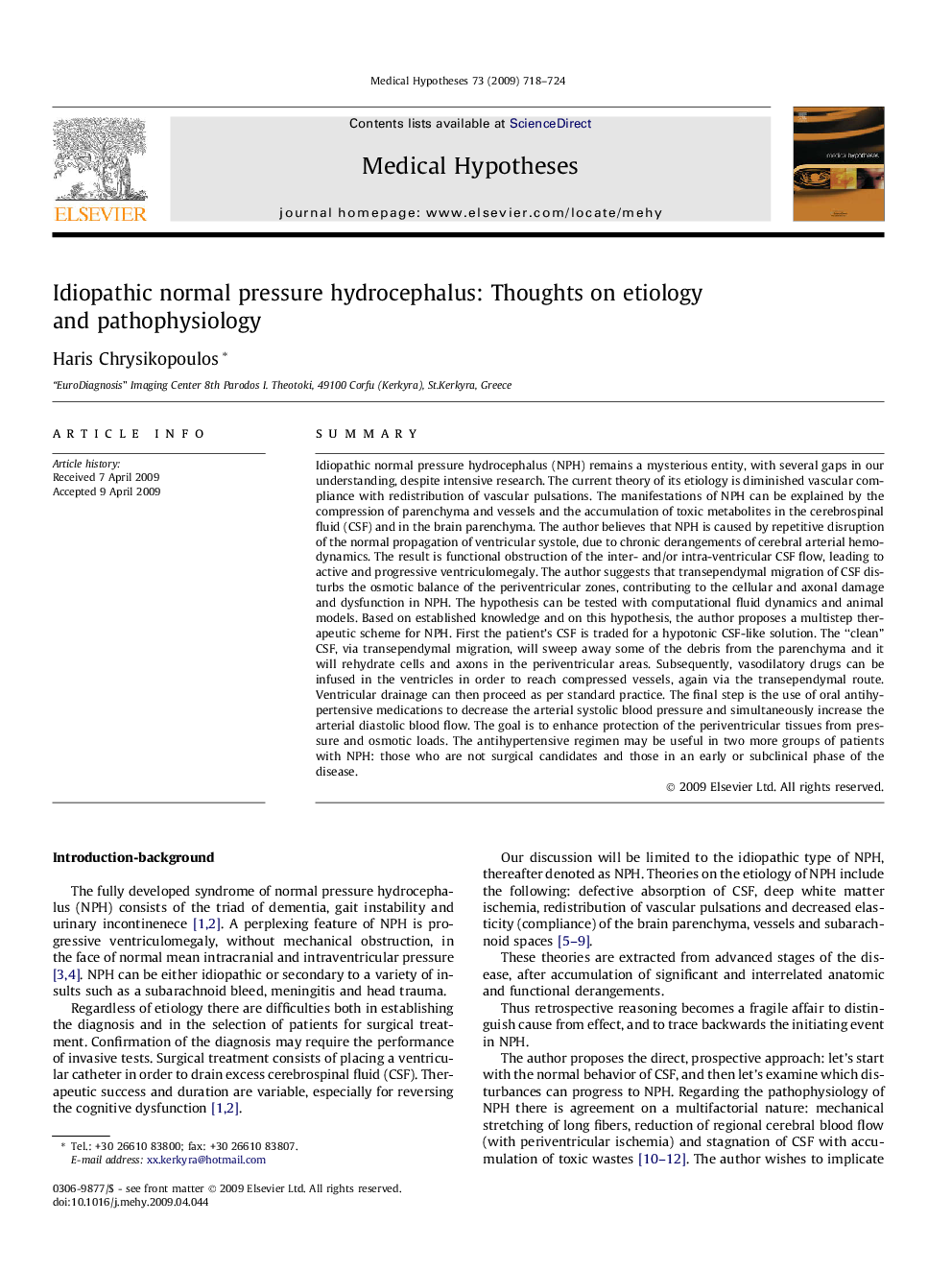| کد مقاله | کد نشریه | سال انتشار | مقاله انگلیسی | نسخه تمام متن |
|---|---|---|---|---|
| 2490560 | 1115069 | 2009 | 7 صفحه PDF | دانلود رایگان |

SummaryIdiopathic normal pressure hydrocephalus (NPH) remains a mysterious entity, with several gaps in our understanding, despite intensive research. The current theory of its etiology is diminished vascular compliance with redistribution of vascular pulsations. The manifestations of NPH can be explained by the compression of parenchyma and vessels and the accumulation of toxic metabolites in the cerebrospinal fluid (CSF) and in the brain parenchyma. The author believes that NPH is caused by repetitive disruption of the normal propagation of ventricular systole, due to chronic derangements of cerebral arterial hemodynamics. The result is functional obstruction of the inter- and/or intra-ventricular CSF flow, leading to active and progressive ventriculomegaly. The author suggests that transependymal migration of CSF disturbs the osmotic balance of the periventricular zones, contributing to the cellular and axonal damage and dysfunction in NPH. The hypothesis can be tested with computational fluid dynamics and animal models. Based on established knowledge and on this hypothesis, the author proposes a multistep therapeutic scheme for NPH. First the patient’s CSF is traded for a hypotonic CSF-like solution. The “clean” CSF, via transependymal migration, will sweep away some of the debris from the parenchyma and it will rehydrate cells and axons in the periventricular areas. Subsequently, vasodilatory drugs can be infused in the ventricles in order to reach compressed vessels, again via the transependymal route. Ventricular drainage can then proceed as per standard practice. The final step is the use of oral antihypertensive medications to decrease the arterial systolic blood pressure and simultaneously increase the arterial diastolic blood flow. The goal is to enhance protection of the periventricular tissues from pressure and osmotic loads. The antihypertensive regimen may be useful in two more groups of patients with NPH: those who are not surgical candidates and those in an early or subclinical phase of the disease.
Journal: Medical Hypotheses - Volume 73, Issue 5, November 2009, Pages 718–724